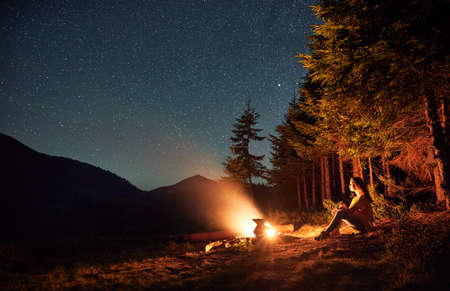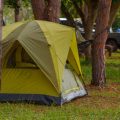1. Understanding Local Wildlife
Before you pitch your tent or light up the campfire, it’s important to get familiar with the animals that call your camping area home. Every region in the U.S. has its own unique wildlife, from deer and raccoons to bears and snakes. Knowing which animals are native to the area helps you stay safe and avoid unintentionally disturbing their habitat.
Why Awareness Matters
Your presence in nature can affect local wildlife more than you might realize. Loud noises, food smells, or even just walking off-trail can stress animals or disrupt their routines. By understanding their habits and respecting their space, you help protect both them and yourself.
Common U.S. Wildlife by Region
Here’s a quick look at some of the animals you might encounter in different parts of the country:
| Region | Common Wildlife |
|---|---|
| Pacific Northwest | Black bears, elk, cougars |
| Southeast | Alligators, white-tailed deer, armadillos |
| Southwest | Coyotes, rattlesnakes, roadrunners |
| Northeast | Black bears, moose, foxes |
| Midwest | Bison (in protected areas), badgers, owls |
Tips for Learning About Local Wildlife
- Check the website of the park or forest where you’ll be camping—many have wildlife guides.
- Talk to a park ranger—they’re a great source of info on recent animal activity.
- Use nature apps like iNaturalist or Audubon Bird Guide to identify species.
Be a Quiet Guest in Nature
The quieter and more observant you are, the more likely you’ll spot wildlife from a respectful distance—and less likely youll disturb them. Remember: we’re guests in their home.
2. Choosing a Campsite Responsibly
When youre out enjoying the great outdoors, its important to remember that youre not the only one calling the area home. Wildlife depend on these natural spaces for food, shelter, and raising their young. Picking the right campsite helps protect these animals and keeps your camping experience safe and enjoyable.
Why Your Campsite Location Matters
Setting up camp in the wrong spot can disturb animal habitats, interrupt feeding routines, and even lead to dangerous encounters. To avoid this, always aim to camp in areas that are already established as campsites. These sites are usually designed with both people and wildlife in mind.
Smart Campsite Selection Tips
Use the table below as a quick guide to choosing a wildlife-friendly camping spot:
| Do | Dont |
|---|---|
| Use designated or previously used campsites | Avoid creating new fire rings or clearing vegetation |
| Camp at least 200 feet away from lakes, rivers, and streams | Don’t set up near water sources—animals rely on them daily |
| Look for flat, durable ground like gravel or packed dirt | Avoid camping on meadows or soft ground that can be damaged easily |
| Stay clear of animal trails and signs of wildlife activity | Never block or camp along game trails or burrows |
| Follow local park rules and guidelines for camping zones | Don’t ignore posted signs or restricted areas—they’re there for a reason |
Think Like a Park Ranger
If youre unsure where to set up camp, imagine you’re a park ranger looking to protect the environment. Would your tent harm any plants? Could it scare off wildlife? This mindset helps keep nature intact for future visitors—and for the animals who live there year-round.
Pro Tip:
If you arrive at a site and see lots of animal tracks, droppings, or nests nearby, it’s best to move along. That’s their home—you’re just visiting!
Quick Reminder:
Choosing your campsite responsibly is one of the easiest ways to show respect for nature while keeping your adventure fun and low-impact.

3. Proper Food Storage and Waste Disposal
When youre out camping, the way you store your food and handle your trash can make a big difference—not just for your safety, but for the well-being of local wildlife too. Animals like bears, raccoons, and even squirrels are highly motivated by food smells. If they associate campsites with easy meals, it can lead to dangerous encounters and long-term harm to both animals and campers.
Why Food Storage Matters
Wildlife has an incredible sense of smell. Bears, in particular, can detect food from miles away. Leaving snacks in your tent or tossing scraps near your site might seem harmless, but it invites wild animals into human spaces—often with negative consequences for everyone involved.
Best Practices for Food Storage
| Do | Don’t |
|---|---|
| Use bear-proof containers or lockers provided at campsites | Leave food or scented items (like toothpaste) inside your tent |
| Store all food, coolers, and cooking gear at least 100 feet from your sleeping area | Hang food bags improperly—animals can still reach them if not done right |
| Keep food sealed in airtight bags or containers to reduce odors | Rely on your car trunk unless its approved for food storage (bears can break in!) |
Handling Trash the Right Way
Proper waste disposal is just as important as food storage. Trash that’s left behind or disposed of incorrectly becomes a major attractant for wildlife. Heres how to manage waste responsibly:
- Pack it in, pack it out: Always take your garbage with you unless there are animal-proof bins available.
- No burning trash: Burning garbage doesnt eliminate odors—it often makes things worse.
- Dispose of greywater properly: Strain out food particles before dumping water at least 200 feet from any water source.
- Bury biodegradable waste correctly: Dig a cat hole 6-8 inches deep, at least 200 feet away from camp and water sources.
Quick Tips to Keep Wildlife Safe
- Avoid leaving pet food unattended outside your tent or RV.
- If youre backpacking, use odor-proof bags inside a bear bag or canister.
- Clean up immediately after meals—don’t leave dirty dishes lying around.
- If you spill something scented (like juice), clean the area thoroughly.
By staying mindful of how we store our food and dispose of waste, we help preserve the natural behavior of wildlife—and make sure our campsites stay safe and enjoyable for everyone.
4. Keeping a Respectful Distance
When youre out camping, spotting wildlife can be one of the most exciting parts of your adventure. But it’s important to remember that we’re visitors in their home. The best way to enjoy these wild moments without causing harm is by keeping a safe and respectful distance.
Watch from Afar
Use binoculars or a camera with a zoom lens to observe animals without getting too close. This lets you enjoy their natural behavior without disturbing them. Getting too close can stress animals, cause them to flee, or even lead them to abandon their young.
Never Feed or Touch Wildlife
Feeding animals might seem harmless or even helpful, but it can actually be very dangerous for them—and for you. Wild animals that get used to human food can become aggressive or sick. They may also lose their ability to find food on their own.
Why Keeping Your Distance Matters
| Reason | Impact |
|---|---|
| Feeding animals | Makes them dependent on humans and disrupts their natural diet |
| Getting too close | Can scare animals away from their habitat or young |
| Touching wildlife | May spread diseases between humans and animals or cause injury |
| Loud noises or sudden movements | Startles wildlife and affects natural behavior patterns |
Be Patient and Quiet
If you want to see more wildlife, stay quiet and still. Many animals are shy and will only come out if they feel safe. Early mornings and evenings are usually the best times for sightings, so grab your binoculars and enjoy the view—at a distance!
Quick Tips:
- Stay at least 100 yards from bears and wolves, 25 yards from other wildlife.
- Avoid using flash photography—it can startle animals.
- If an animal changes its behavior because of your presence, you’re too close.
- Teach kids to respect wildlife and observe quietly.
By watching wildlife respectfully, youre helping protect nature while still enjoying everything it has to offer.
5. Minimizing Human Impact
When youre out enjoying the great outdoors, its important to remember that were just visitors in natures home. To create a wildlife-friendly campsite and show respect for the environment, minimizing our impact is key. Here are some simple ways to do that:
Stick to Marked Trails
Always hike and set up camp on designated trails and campsites. These areas are chosen to reduce damage to plants and animal habitats. Wandering off-trail can lead to soil erosion, trampled vegetation, and disturbed wildlife homes.
Leave the Environment as You Found It
Avoid altering your surroundings. That means no digging trenches, cutting branches, or moving rocks around. Nature has its own balance, and even small changes can have big effects on local ecosystems.
Keep Noise Levels Down
Loud sounds can scare off wildlife and disrupt their natural behavior. Try to keep voices low, avoid playing loud music, and be mindful of how sound travels in quiet forest areas—especially during early mornings and evenings when animals are most active.
Use Eco-Friendly Gear
Choosing gear that’s designed with the environment in mind helps reduce your footprint. Here are a few tips:
| Eco-Friendly Choice | Why It Matters |
|---|---|
| Biodegradable soaps | Break down naturally and dont pollute water sources |
| Reusable dishware & utensils | Cuts down on single-use plastics that harm wildlife |
| Solar-powered lights | Avoids battery waste and uses renewable energy |
| Tent footprints & pads | Protects ground cover from being damaged under your tent |
Quick Tips for Low-Impact Camping:
- Pack it in, pack it out – leave no trash behind.
- Camp at least 200 feet away from lakes and streams.
- Avoid feeding wildlife – it changes their behavior and diet.
- Use established fire rings or bring a portable stove instead of building new fire pits.
By following these practices, you help keep nature wild and beautiful—not just for yourself, but for future campers and the creatures who call it home.


